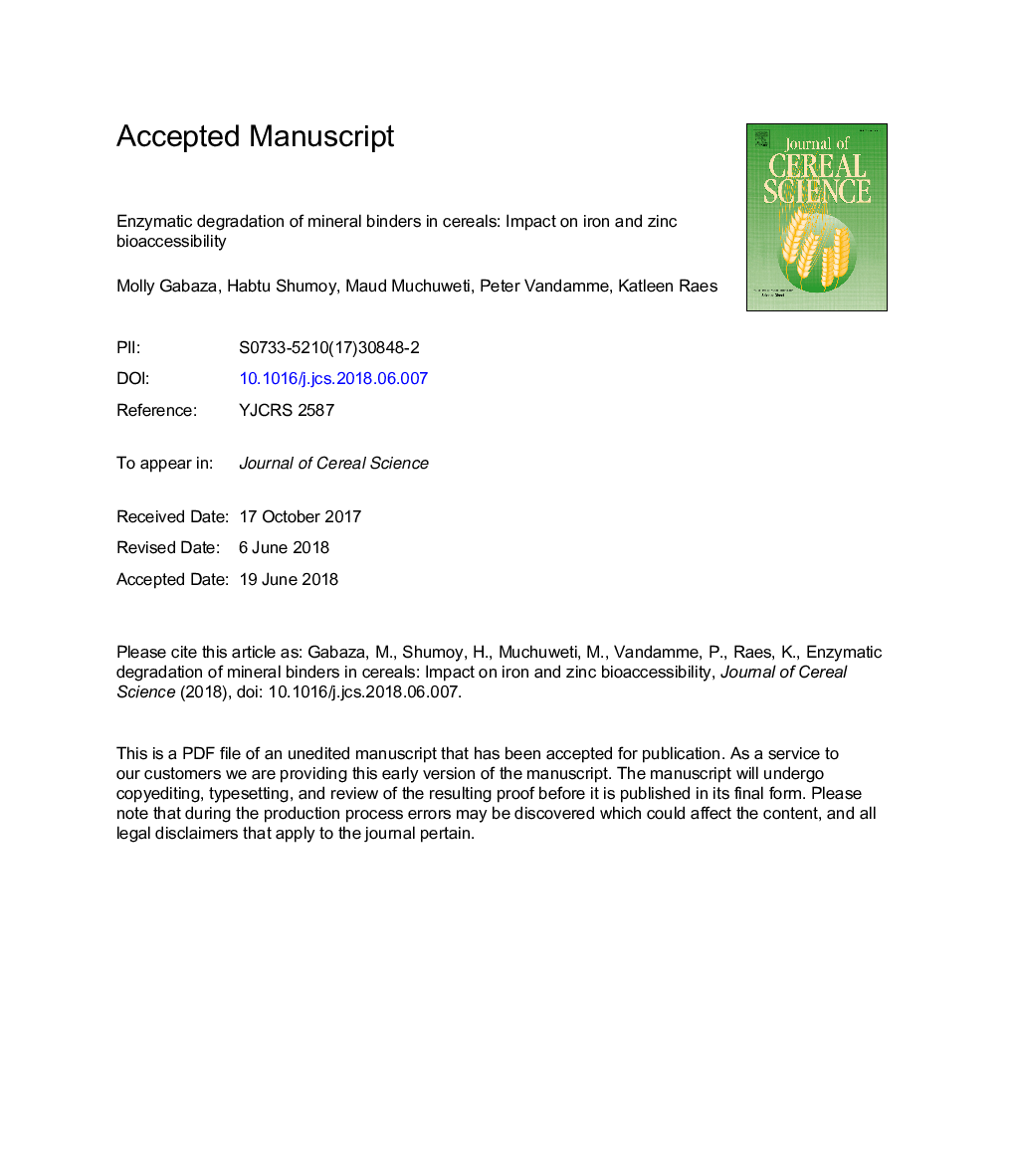| Article ID | Journal | Published Year | Pages | File Type |
|---|---|---|---|---|
| 8881335 | Journal of Cereal Science | 2018 | 30 Pages |
Abstract
Successful strategies to improve iron and zinc bioaccessibility of cereals can only be realized based on a thorough understanding of the mineral to mineral binder interactions. Therefore, exogenous enzymes were used i.e. phytase and a multiple enzyme system comprising of phytase, laccase and tannase (PÂ +Â LÂ +Â T) to degrade phytic acid and phenolic compounds in order to understand the magnitude of their effects on iron and zinc bioaccessibility of cereals commonly consumed in Africa. Bioaccessibility was defined as the proportion of minerals able to pass through a dialysis membrane of 12-14Â kDa molecular weight cut-off while total soluble minerals were the sum of soluble minerals able to pass through the dialysis membrane and non-dialyzable minerals. Phytase treatment caused an increase in total soluble zinc from 20.2-59.4 to 29.5-67.6%. A positive effect on the total soluble iron from 23.9-65.5 to 48.7-87.3% was only observed after treatment of cereals with PÂ +Â LÂ +Â T. The bioaccessibility of iron and zinc was reduced after both phytase and PÂ +Â LÂ +Â T treatments, possibly because of interactions between the minerals and the exogenous enzymes. Nevertheless, phytic acid and phenolic compounds have an effect on iron and zinc bioaccessibility but depending on the type of cereal, dietary fibers may also be important.
Keywords
Related Topics
Life Sciences
Agricultural and Biological Sciences
Agronomy and Crop Science
Authors
Molly Gabaza, Habtu Shumoy, Maud Muchuweti, Peter Vandamme, Katleen Raes,
